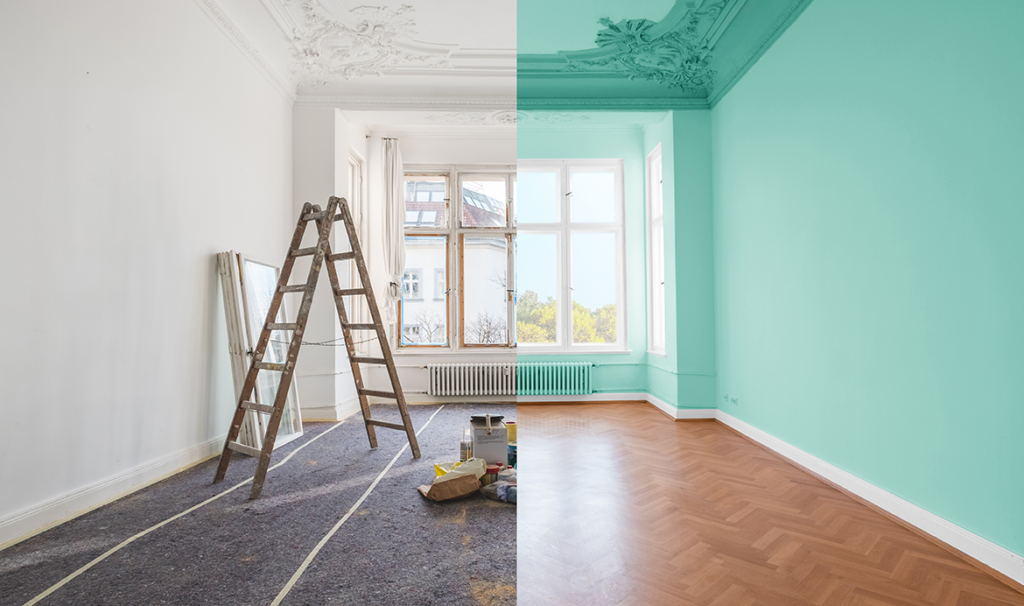There are a few things to think about when determining whether to hire help or do the house painting yourself. You might leave it to the experts in certain situations with multiple house painting options, depending on your level of ambition. Consider your painting requirements and determine whether any of the following scenarios apply to you.
Scale
One of the greatest factors in determining whether to hire painting assistance or do things on your own is scale. If you want to paint your house, ask yourself if it’s a task you should attempt on your own. For instance, is your home a townhouse or has numerous stories? Do you want to paint the exterior or only the kitchen? A DIY paint job can become complicated once you take into account the amount of time. It takes to prepare the surface and apply many coats of paint. You might choose to hire professionals like MacInTouch if the house painting project is large.
Currently applied paint
Preparation time for painting a new home with smooth surfaces is significantly decreased. On the other hand, painting an ancient house with peeling siding or walls will take much longer. Consider the condition of the paint when determining whether to work with pros or do it yourself while painting your house. Hire assistance if you’re not up for the effort of spending hours scraping and sanding for the best results.
Interior Vs Exterior
It goes without saying that outside painting is more difficult. You are shielded from the elements indoors. However, you must consider difficult-to-reach areas and the unpredictability of the weather while painting a home’s exterior. We believe you’ll be able to paint your front door yourself if all you want to do is refresh it. On the other hand, a complete external makeover calls for expert assistance.
While we don’t want to cast any aspersions on your painting prowess, a difficult paint job will be much more successfully accomplished by professionals. With the right background knowledge, you can still tackle a lot of painting projects on your own.
Option 1: Employing qualified painters
Home Painting: Getting Assistance
It’s time to seek assistance if you’ve realized that you don’t have the knowledge or time to paint your house alone. Following are some steps to take while hiring painters:
Obtain a painting quote and contact references
Get a thorough estimate from a painter before employing them. Costs for labor, supplies, paint, and project duration should all be included. Taking care of details up front will stop problems from arising later. Inquire about the painter’s travel fees, whether caulking and pressure washing are included in the estimate, and any other queries you may have.
Verify your painter’s qualifications.
Make sure the person you hire to paint your house possesses all the licenses and permits needed by your state before hiring them. Additionally, find out if the painter has insurance. Make sure your painter’s insurance covers these situations in case any employees are hurt or your personal property is harmed.
Know what is expected of you
Even if you employ a contractor, you might need to contribute in a little way to the house painting process. Moving your furniture to the middle of the room or taking off switch plates and outlet covers are just a few examples of how to do this. Before hiring, find out how much preparation is required from you.
Plan your payments.
In general, you should stay away from painters who demand upfront payment in full. While painters might ask for a 20%–30% down payment of the total cost of the job. you shouldn’t normally pay again until the job is finished. A contract outlining all payment terms and specifying the precise cost based on supplies and labor should be used.
Option 2: Painting by hand
DIY Painting Purchasing Guide
Painting a house is no simple task. Despite your wanting to choose the cheapest paint you can find, keep in mind that you want the paint to be attractive and durable. Many apartment design applications are available to inspire you if you haven’t decided on a color scheme. You must select the type of paint you want once you have chosen your color scheme.
Paint in latex
Water-based paint, the most common and environmentally benign type of paint, is referred to as latex paint. Latex paints are perfect for external walls that experience a lot of weathering because they offer excellent color retention. Additionally, latex paints are a wonderful choice for interior walls in wet areas like bathrooms and laundry rooms. Additionally, latex paints smell less and dry more quickly than oil-based options.
Oil-based Paints:
Oil-based paints, which either contain synthetic alkylates or natural oils, are more resilient than latex paints. On surfaces where you want the finish to last for a long time, oil-based paints should be utilized. This type of paint is unmatched in terms of longevity while having a stronger odor and taking longer to dry. Oil-based paints are a fantastic option for moldings and trim because of their durability.
Calculating the amount of paint needed
Paint costs might be high. Since paint dealers won’t give a refund for a gallon of paint that has already been colored, buying too much paint is especially annoying. That’s why it’s advised to buy about 80% of the projected amount of paint first, and then buy the rest when you’re almost done. The amount of paint you’ll need depends on a number of variables, including square footage, surface type, and paint quality. You should be able to find out how much paint you need from a paint store for a particular job. Ask a salesperson for guidance if you’re unsure about how much paint to purchase.
Sheen Paint:
Paint comes in a variety of lusters, from matte to shining. The proportions of the pigment, resin, and other elements determine how glossy the paint will be. If you’re having trouble deciding on a finish, keep in mind that glossier finishes typically have better washability and durability. Conversely, flat paint does a better job of concealing surface flaws. Pearl and eggshell lusters fall somewhere in the middle because they can be partially concealed by irregularities and are more washable than flat paint.



